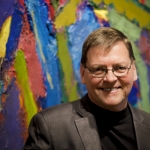
Joanna Chin
Blog Salon Recap: So, Does Size Matter?
Posted by Dec 07, 2012 0 comments

Joanna Chin
 Joanna Chin
Joanna Chin
As the newest staff member on the Animating Democracy team, reflecting on how our past has informed present work has been illuminating.
By placing individual artists and organizations such as those that made up our original Animating Democracy Lab cohort into a national or field-wide context, we hope we have helped to magnify their impact over time and on a national scale.
Although the initial Animating Democracy grant cohort was a relatively small group (36 organizations), we continue to see the connections and ripples from relationships formed through many deep learning exchanges. As time progresses, the connections made within a small group of artists and arts organizations continues to “scale out” (a phrase borrowed from Roberto Bedoya’s post) in the form of collaborations and cross sector work such as that of Sojourn Theatre.
We have always been a national initiative; but, we accomplish our goals by creating opportunities to capture and translate the practitioner’s voice to a broader field and across sectors. This is still essentially true in our current work exploring the social impact of the arts as well as mapping art and social change trends.
We are national in scope, but scale has been achieved primarily through promoting human connections and ripples over time. In this vein, I’d like to take a crack at summarizing and connecting our bloggers under some major themes/approaches that emerged during the Salon:
Read More

 Pomegranate Center works with communities to imagine, plan, and create shared public spaces designed to encourage social integration and build local identity.
Pomegranate Center works with communities to imagine, plan, and create shared public spaces designed to encourage social integration and build local identity.

 Bill O'Brien
Bill O'Brien

 Michelle Alexander (photo by Nicholas Wray)
Michelle Alexander (photo by Nicholas Wray)

 Doug Borwick
Doug Borwick

 Regin Igloria
Regin Igloria
Most Commented